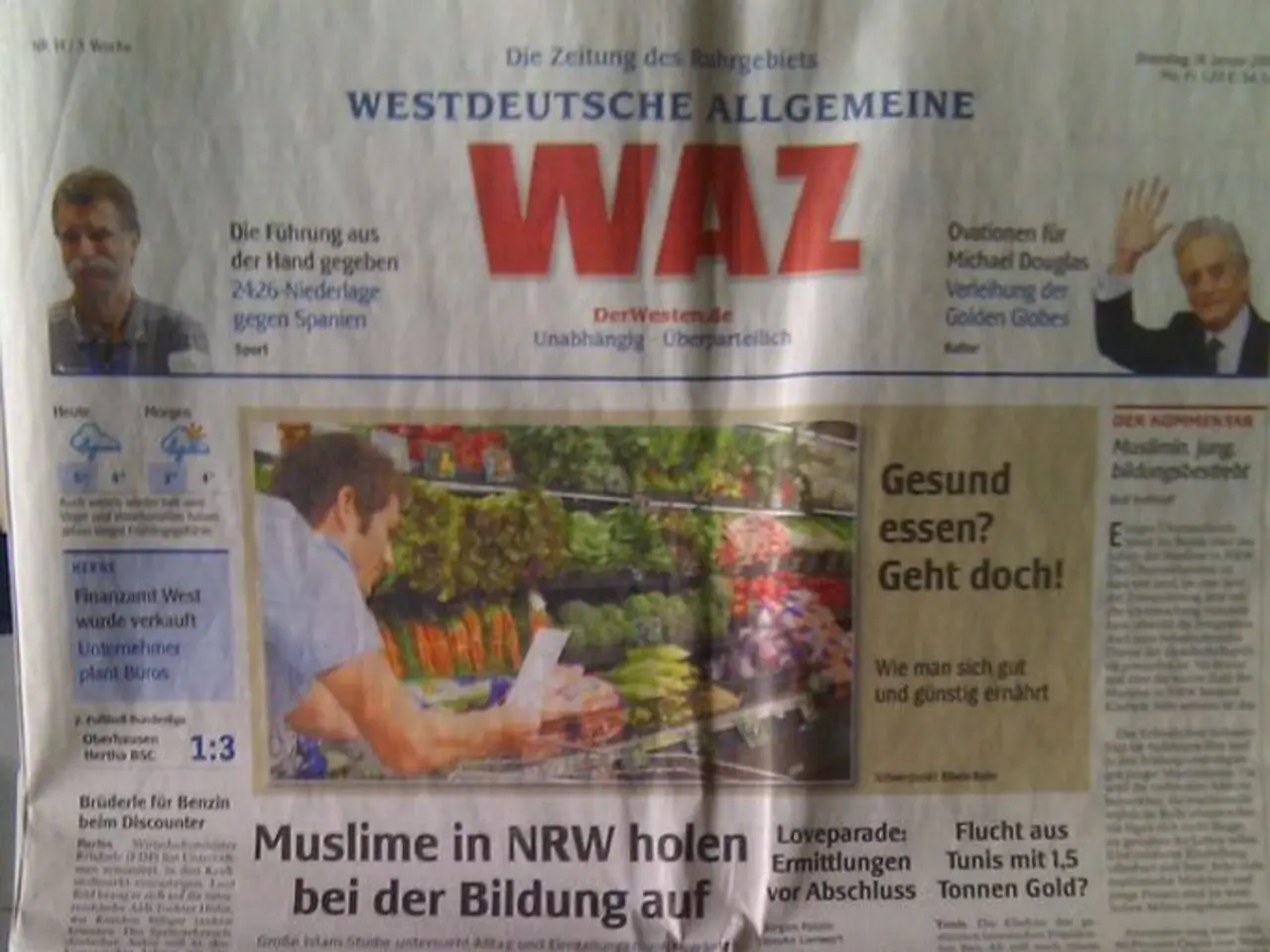Pressure Mounts on Future Markets Following Surprisingly High Wholesale Inflation Figures
In a recent development, the outlook for U.S. producer prices has witnessed a significant change. In July 2025, the Producer Price Index (PPI) surged by 0.9%, which is more than double the expected rise of 0.2%, marking the largest monthly increase since June 2022 [2][4]. This substantial increase reflects ongoing inflationary pressures, partly due to tariffs and supply chain costs [2]. Core PPI, excluding food and energy, also rose by 0.6% [2]. The year-over-year PPI inflation stood at 3.3% in July, the highest 12-month increase since earlier in the year [5].
Implications for Expected Interest Rate Cut by the Federal Reserve
Despite the higher producer price inflation in July, expectations for a September rate cut by the Federal Reserve remain strong. Recent robust earnings reports from most S&P 500 companies have bolstered growth forecasts, which could support a rate cut [4]. However, the Federal Reserve faces a policy dilemma, as persistent inflation pressures from the PPI data might challenge rate cut expectations. The Fed will be closely monitoring the upcoming personal consumption expenditure (PCE) inflation data, its preferred inflation gauge, to guide future policy decisions [4]. Markets have responded to the PPI data with increased Treasury yields and equity volatility, indicating heightened inflation-hedging investment strategies [2].
Economic Implications
- Inflation Pressures: The sharp rise in PPI suggests potential upward pressure on consumer prices, which could influence future inflation trends [4].
- Monetary Policy: The unexpected increase in PPI complicates monetary policy decisions, especially regarding interest rates, as the Fed weighs inflation risks against economic growth [2][4].
- Market Reactions: Higher Treasury yields and increased equity volatility reflect market concerns about inflation and monetary policy adjustments [2].
- Global Markets: The hotter-than-expected producer price inflation data may partly offset optimism about a September interest rate cut, as evidenced by the mixed performance of global markets. Asian stocks ended mostly lower on Thursday, while European shares rose to a two-week high [1]. U.S. index futures are pointing to a higher open on Thursday, and the S&P/NZX-50 Index rose 0.5% [1].
- Sector-Specific Impact: Several companies saw significant drops in their stock prices, including Thyssenkrupp, which slumped 6.4%, Embracer Group AB, which plummeted 23%, and HelloFresh, which plunged 16% [1]. On the other hand, some companies, such as insurer Aviva, surged nearly 5%, and Admiral Group jumped 6.4% [1].
In conclusion, the unexpected surge in U.S. producer prices in July has introduced a new layer of complexity into the Federal Reserve's monetary policy decisions, particularly regarding interest rates. As the Fed continues to weigh inflation risks against economic growth, global markets will closely monitor developments to adjust their strategies accordingly.
- The sharp rise in U.S. producer prices, as indicated by the increase in the Producer Price Index (PPI), may lead to increased prices for consumers and potentially impact future inflation trends.
- The unexpected increase in PPI data has complicated monetary policy decisions for the Federal Reserve, especially regarding interest rates, as they consider the inflation risks alongside economic growth.







